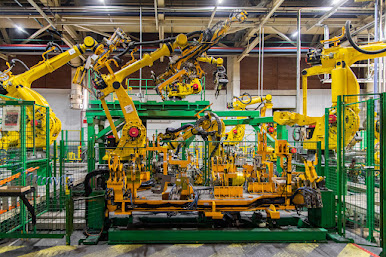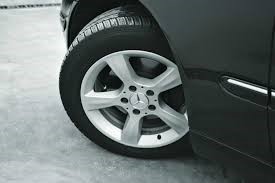Consumer Goods, Capital Goods, Intermediate Goods
After the production of a good or service, the next aim of the producer is to sell the good to the consumer. The consumer can be an individual or a firm; and the good when sold to the consumer can be consumed as it is or the good can be transformed into another good with the help of a productive process such as a machine.
For example, when wheat is sold to a
flour mill, it is converted into flour through the use of machinery. When a
good is transformed into another good like in the case of wheat, it loses its specific
characteristic during the production process. Such type of a good is known as intermediate
good.
When the goods are not further transformed into other
goods, and are used as it is, it is known as final goods. So, the final goods
are those which do not pass through any further production process or transformation
and are used as it is by the consumers.
The final goods can be of two types- Consumer goods and
Capital goods.
Consumer Goods
Consumer goods are normally purchased by the households and used for the direct satisfaction of wants such as ice-cream, milk, sugar, tea etc. These goods are not further resold to others for profit. Sometimes these goods can also be transformed into other goods, for example milk can be put into tea or made into curd, yet these goods are still called final consumption goods as they are not sold further.
The consumer goods can be perishable like the ones
mentioned above or durables which are used for a number of years like a washing
machine, refrigerator, car etc.
Capital Goods
The other type of final goods are Capital goods. These are goods used for the production of goods and services. Capital goods do not transform into another good while producing goods and services.
These goods form the backbone of any economy as all other goods and services are produced with the help of these goods. These are generally machines, tools, equipments etc. For example, cotton is converted into thread through a spinning machine. This thread is further converted into fabric through Looms. It is further converted into cloth through finishing machines. These machines transform one good into another without getting transformed themselves and can be used for several years.
Thus, capital goods have another feature that these can be used
for several years. Therefore, firms invest a lot in these capital goods.
Capital goods over a period of time undergo wear and
tear which leads to their depreciation also known as consumption of fixed capital. Firms generally spend a fixed amount of money on the repairing and maintenance of
capital goods.
Intermediate Goods
Intermediate goods are goods which are used in the production of other goods and services, which may be the final goods or services; or other intermediate goods. They help in adding value to the final goods and services.
Intermediate goods can be in the form of raw materials or inputs aiding in the production of goods and services. These goods can become the part of the final good or may get transformed into another good during the production process. For example, wheels in a car become a part of the final good but are not the final good itself. Similarly, rubber which is used to make tyres is completely transformed through the production process.
Majorly, these Intermediate goods are goods which are used in the production of other goods and services, which may be the final goods or services; or other intermediate goods. These goods are sold or resold between firms.
Intermediate goods can be manufactured and used by the firm itself. For example, a sugar mill which also owns the sugarcane farm, produces sugarcane which is the main raw material for the manufacturing of sugar, and uses it up.
Intermediate goods can also be manufactured and sold to other firms. For example, steel sheets can be manufactured by an iron and steel firm and sold to an automobile firm to be used in the production of cars.
Intermediate goods can be sold to other firms to manufacture further intermediate goods. For example, a firm may manufacture yarn to be sold to another firm which converts it into fabric which itself is an intermediate good used to further produce cloth.
Therefore, Intermediate goods are goods which lie within the
production line and can’t be used as final goods as of itself.
These goods are not counted in the GDP calculation as
the value of these goods is included in the final value of goods and services. So,
for example nuts and bolts when assembled in a car become a part of the final
product and the value of that final product (car in this case) is calculated
and included in the GDP and the value of nuts and bolts is not calculated
separately.
Can Consumer Goods be Intermediate Goods?
It is to be kept in mind that the same good can become a
consumption good or an intermediate good depending upon its use. So, if tea and
milk is purchased by a restaurant, then for the restaurant these are inputs or
intermediate goods as these after being transformed are sold to customers for
profit. In the same way electricity used by household is for domestic purposes
while in a factory electricity is used to run machinery to produce goods and thus
is an input not a final good. Therefore, how and by whom the good is being used
determines whether it’s an intermediate good or a consumption good.
Can Consumer Goods be Capital Goods?
Now, again a good can fall under the category of both
consumer good and capital good, depending upon the nature of use of that good. Take
for example a car. If it is bought by a household, it is used by the household
members for their personal use. But if the car is bought by a car rental company, then that car becomes a capital good as it is used to provide a service
for profit to the customers for a number of years. Car in this case helps in
carrying the business forward and hence is a capital good. A sewing machine
when bought by a household is used to sew clothes for family members. But the
same machine when bought by a tailor is used to make clothes for his/her
customers with an aim to make profit. Similarly, a coffee machine differs in
its nature of use when bought by a household vs when bought by a restaurant. For
the restaurant, the coffee machine acts as a capital good as it is used for
several years in order to make coffee for its customers with an aim to make
profit.
Key Points
- The final goods are those which do not pass through any further production process or transformation and are used as it is by the consumers.
- The final goods can be of two types- Consumer goods and Capital goods.
- Consumer goods are used for the direct satisfaction of wants. These goods are not further resold to others for profit.
Capital goods used for the production of goods and services. Capital goods do not transform into another good while producing goods and services. Capital goods can be used for several years. Therefore, firms invest a lot in these capital goods.
Intermediate goods are goods which are used in the production of other goods and services, which may be the final goods or services; or other intermediate goods.They help in adding value to the final goods and services.
Intermediate goods are not counted in the GDP calculation as the value of these goods is included in the final value of goods and services.
A good can fall under the category of consumer good, capital good or intermediate depending upon the nature of use of that good.



